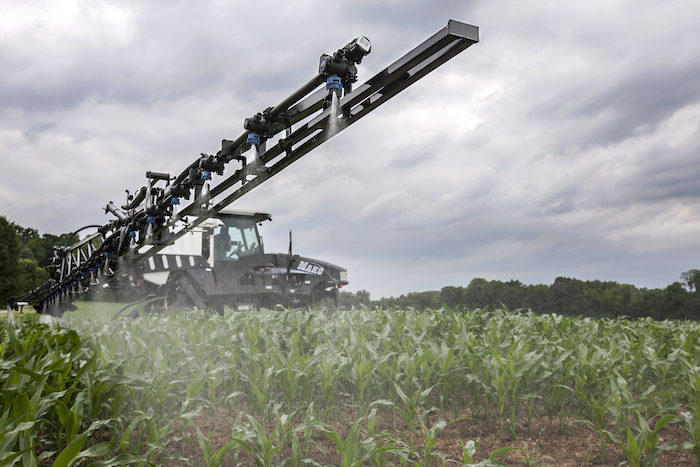The public comment period for proposed EPA revisions to rules and regulations regarding the use of atrazine is Oct. 7.
The agency proposed new rules for atrazine's use in June and sought public comment on them. After several groups asked for additional time, the agency extended the comment period.
The proposed rules would reduce the concentration equivalent level of concern equivalent from 15 parts per billion to 3.4 parts per billion, reduce atrazine usage to a maximum of 2 pounds per acre per year, prohibit aerial spraying, and ban atrazine applications to saturated soils, as well as within 48 hours of forecasted heavy precipitation.
Growers in areas where the concentration equivalent level of concern would exceed 3.4 parts per billion would be required to apply mitigation measures from lists furnished by the EPA.
Kansas no-tiller Bill Roe wrote that the new measures could starve no-tillers into conventional ag.
"Our operation began converting to no-till over 35 years ago, due in large part because of products such as atrazine," he writes. "I fear that if the proposed regulations on atrazine are enacted, the environmental and economic gains from no-till will be lost."
The proposed measures are too challenging to be practical, Roe adds.
"I am alarmed at the new proposed level of concern at 3.4 parts per billion and the unnecessary burden placed on farmers and service providers to continue to use atrazine," he writes. "Due to field attributes beyond our control, such as the natural field slope, farmers may not be able to meet the requirements. Additionally, I find the ban on applying atrazine if there is rain in the forecast laughable, these days it seems that the weather forecasts are rarely accurate, predicting rain that never falls, or receiving rain with nothing in the forecast."
A host of interest groups, ranging from members of Congress to state agricultural agencies to trade and environmental advocacy groups have submitted comments.
The South Carolina Farm Bureau wrote that no-till could suffer particular repercussions.
"The use of atrazine has several beneficial outcomes in crop production that assist farmers in carbon-smart farming, including playing a significant role in carbon sequestration," the Bureau's submitted comment reads. "In particular, its use assists farmers seeking to utilize conservation tillage and no-till practices that conserve soil, preserve and increase nutrients, improve water quality and reduce greenhouse gas emissions. If farmers are unable to effectively use atrazine, many acres will return to tillage and carbon savings will be greatly impacted."
The group Minnesota Crop Production Retailers echoed those concerns.
"Atrazine also plays a significant role in feeding the world, but is also protects the environment and critical wildlife habitats," the group's public comment reads. "Each year, Atrazine helps farmers prevent up to 85 million tons of soil erosion by encouraging conservation tillage and no-till farming."
Anyone interested in submitting a comment can do so on the regulations.gov website. Comments are due by 11:59 p.m. Friday, Oct. 7.







